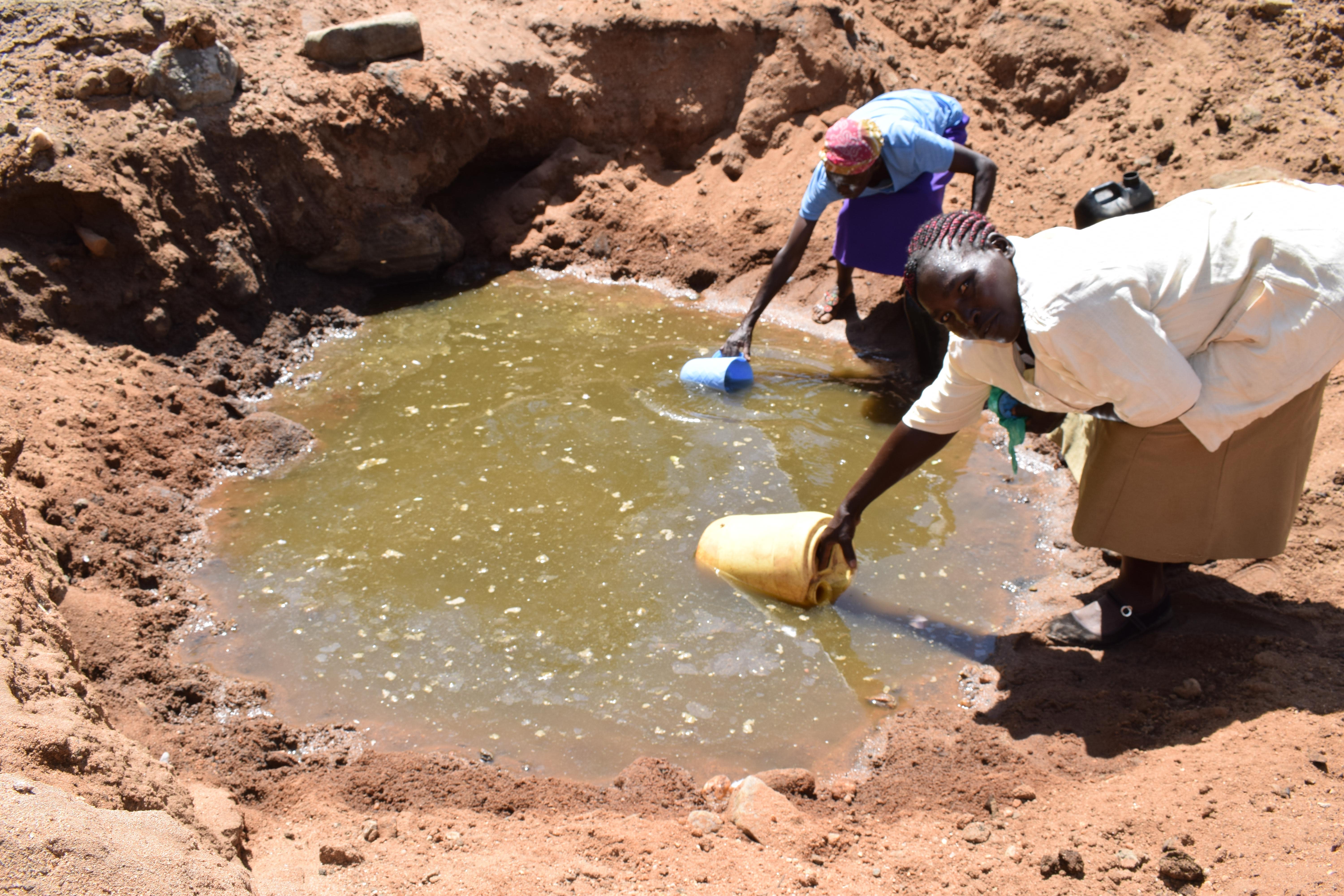Ngaa Secondary School has no reliable, safe source of water. The rainwater tank on the school grounds is far too small to provide reliable water to the 157 students at the school. Therefore, the students have to rely on alternate, unsafe water sources to meet their daily needs. It also places the school at risk of closure by the government because it is legally required to provide water and adequate sanitation facilities to the students.
Water is collected using donkeys by parents from various sources as a way of paying fees for their children studying at the school. Most of the parents fetch that water from nearby open river scoop holes that look like this:

Scoop holes are found on seasonal riverbeds that are prone to running dry during the dry seasons. The whole community depends on the sources and also share them with animals, which makes them overstrained and overcrowded.
This water is not appropriate for human use, but the school community has no alternative.
"Our school is young and we are really struggling to survive in the prevailing water situation in our area of operation," Principal Samuel Wambua said.
"Our levels of hygiene and sanitation are below average as we lack convenient clean water supply for the school community."
The school was started by the Ngaa Community through support from the Mbooni Constituency Development Fund, which funded construction of the first three classrooms in 2009. It operates under the umbrella of Africa Inland Church, but has grown significantly through the support of parents and the Kenyan Government.
The school is located on a small piece of land that is shared with Ngaa Primary School.
Here’s what we’re going to do about it:
Training
Students and staff will be trained for one day. Those in attendance will form a school health club that will promote good hygiene and sanitation practices both at school and home. They will learn all of the steps to proper handwashing, how to treat water, and how to keep their environment clean. The school will also be taught how to best oversee and maintain their new rainwater catchment tank and handwashing stations.
Handwashing Stations
Three handwashing stations will be delivered at the project’s completion. These are 1,000-liter plastic tanks fitted with four taps. The health club and school management will be responsible for making sure tanks are filled with water and that a cleaning agent such as soap or ash is available.
Rainwater Catchment Tank
We will build a 104,000-liter rainwater catchment tank for this school. This water will benefit the students, teachers, and supplementary staff. Parents will mobilize the materials needed for construction, such as sand and stone. They will also lend some strong arms to help with the actual construction.
The huge capacity of this tank makes the others look tiny in comparison; 104,000 liters should be enough water to carry students and staff through the entire dry season. As soon as the tank has time to cure, it can begin to collect rainwater for drinking, cooking, and cleaning!

 Rainwater Catchment
Rainwater Catchment
 Rehabilitation Project
Rehabilitation Project



































